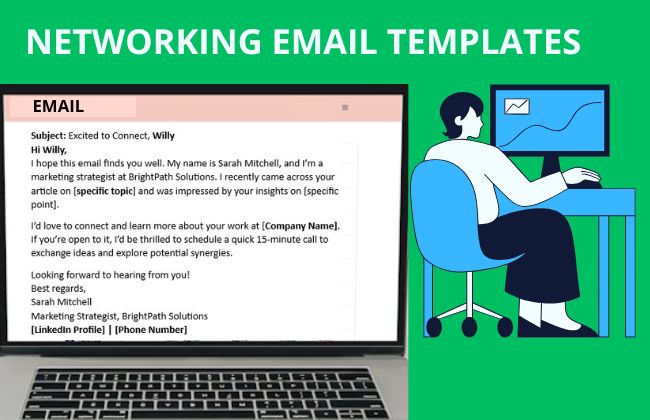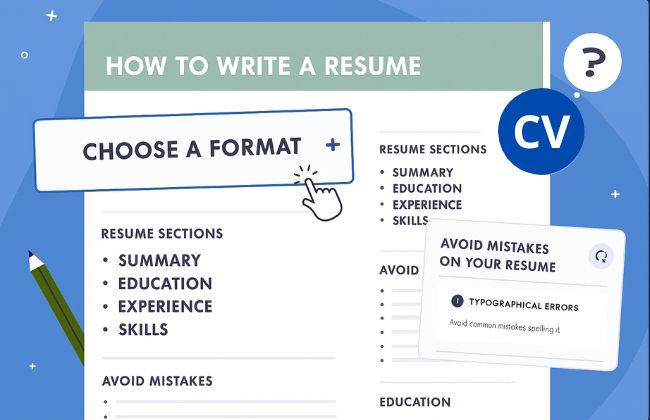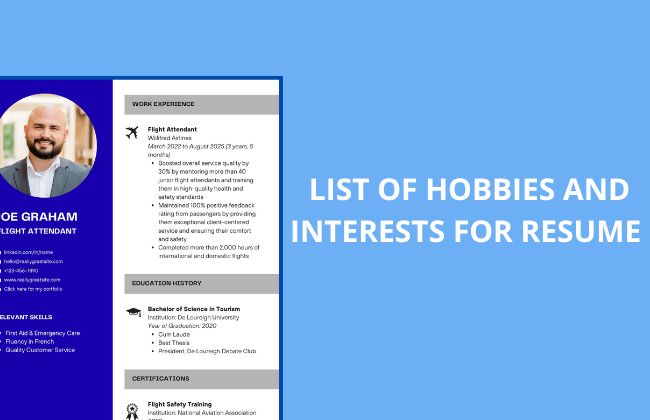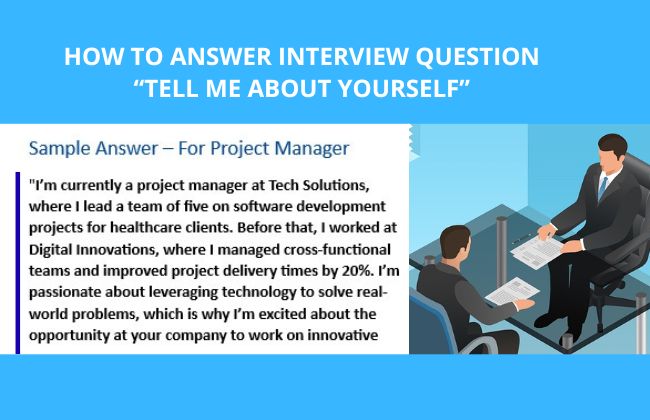Networking is the backbone of career growth and professional relationships, but reaching out to someone new can feel daunting. That’s where a well-crafted networking email can work wonders.

A strong email doesn’t just communicate your message—it builds connections, creates opportunities, and lays the foundation for lasting relationships. Whether you’re seeking mentorship, exploring a potential collaboration, or just looking to expand your circle, the right email can open doors you didn’t even know existed.
But here’s the catch: drafting that perfect email isn’t always easy. That’s where templates come in. With a thoughtfully designed networking email template, you’ll save time, avoid common pitfalls, and ensure every message you send is polished, professional, and gets results.
This article will delve into the essential elements of a successful networking email template, providing you with practical tips and examples to enhance your outreach efforts.
Table of Contents
- 1 Purpose of Networking Emails
- 2 Key Components of an Effective Networking Email
- 3 7 Email Templates to Make Networking
- 3.1 1. Reaching Out to a New Contact
- 3.2 2. Following Up After a Networking Event
- 3.3 3. Requesting an Informational Interview
- 3.4 4. Reconnecting with a Former Colleague
- 3.5 5. Asking for a Referral or Recommendation
- 3.6 6. Thanking Someone for Their Time or Help
- 3.7 7. Cold Outreach to a Potential Mentor
- 4 How To Write a Networking Email
- 5 Tips for Writing Successful Networking Emails
Purpose of Networking Emails
Networking emails serve multiple purposes, all centered around fostering professional relationships and creating opportunities.
Below are the primary objectives:
- Building Relationships: Establish or strengthen connections with professionals in your field or related industries.
- Seeking Opportunities: Open doors to job prospects, collaborations, partnerships, or mentorship.
- Gathering Information: Request insights, advice, or feedback from experienced professionals through informational interviews.
- Following Up: Maintain contact after meetings, conferences, or introductions to solidify relationships.
- Expressing Gratitude: Show appreciation for previous interactions, advice, or opportunities provided by the recipient.
Key Components of an Effective Networking Email
An effective networking email is concise, professional, and tailored to the recipient. Below are the essential components to include:
1. Subject Line
Purpose: Grab attention and clearly indicate the email’s intent.
Tips: Keep it short (5-8 words), specific, and relevant. Avoid vague phrases like “Hello” or “Quick Question.”
Examples:
- “Coffee Chat Request: Marketing Insights”
- “Following Up from [Event Name]”
- “Seeking Advice on [Industry/Topic]”
2. Greeting
Purpose: Set a professional and friendly tone.
Tips: Use the recipient’s name (e.g., “Dear Sarah” or “Hi John”). If unsure, opt for a formal greeting like “Dear [First Name] [Last Name].”
Example: “Hi [Recipient’s Name],”
3. Introduction and Context
Purpose: Introduce yourself briefly and establish a connection.
Tips: Mention your name, role, or background, and reference any mutual contacts, shared events, or common interests.
Example:
I’m Jane Doe, a recent marketing graduate from [University]. We met briefly at the [Event Name] last week, where I was impressed by your keynote on digital strategies.
4. Purpose Statement
Purpose: Clearly state why you’re reaching out.
Tips: Be direct but polite. Specify what you’re seeking (e.g., advice, a meeting, or information).
Example:
I’m reaching out to learn more about your experience transitioning into product management, as I’m exploring a similar career path.
5. Value Proposition
Purpose: Show what’s in it for the recipient or how the interaction could be mutually beneficial.
Tips: Highlight shared interests, potential collaboration, or how their expertise aligns with your goals.
Example:
I’d love to hear your insights on navigating the tech industry, and I’d be happy to share my recent research on [related topic].
6. Call to Action
Purpose: Prompt the recipient to take a specific action, such as scheduling a meeting or replying with feedback.
Tips: Suggest a clear, low-commitment action, like a 15-minute coffee chat or a quick phone call.
Example:
Would you be available for a 15-minute virtual coffee next week to discuss your career journey? I’m flexible with my schedule.
7. Closing
Purpose: End politely and express gratitude.
Tips: Include a professional sign-off (e.g., “Best regards” or “Thank you”) and your full name, contact information, and optionally a LinkedIn profile link.
Example:
Thank you for considering my request. I look forward to the possibility of connecting!
Best regards,
Jane Doe
[Your Email] | [Your LinkedIn Profile]
7 Email Templates to Make Networking
Below are common use cases with tailored examples:
1. Reaching Out to a New Contact
Use Case: You’ve been introduced to someone or found a professional you’d like to connect with, and you want to establish a relationship.
Example:
Subject: Excited to Connect, [Name]
Hi [Name],
I hope this email finds you well. My name is Sarah Mitchell, and I’m a marketing strategist at BrightPath Solutions. I recently came across your article on [specific topic] and was impressed by your insights on [specific point].
I’d love to connect and learn more about your work at [Company Name]. If you’re open to it, I’d be thrilled to schedule a quick 15-minute call to exchange ideas and explore potential synergies.
Looking forward to hearing from you!
Best regards,
Sarah Mitchell
Marketing Strategist, BrightPath Solutions
[LinkedIn Profile] | [Phone Number]
2. Following Up After a Networking Event
Use Case: You met someone at a conference, seminar, or networking event and want to continue the conversation.
Example:
Subject: Great Meeting You at [Event Name]!
Hi [Name],
It was a pleasure meeting you at [Event Name] last week. I really enjoyed our conversation about [specific topic discussed]. Your perspective on [specific point] was particularly insightful.
As we discussed, I’d love to explore how we might collaborate on [specific project/idea]. Let me know if you’re available for a coffee chat or a virtual meeting in the coming weeks.
Looking forward to staying in touch!
Warm regards,
James Carter
Business Development Manager, Apex Innovations
[LinkedIn Profile] | [Phone Number]
3. Requesting an Informational Interview
Use Case: You’re seeking advice or insights from someone in your desired field or role.
Example:
Subject: Seeking Your Advice on [Industry/Role]
Hi [Name],
I hope you’re doing well. My name is Emily Chen, and I’m currently exploring opportunities in [specific industry/role]. I came across your profile on LinkedIn and was inspired by your career journey at [Company Name].
I’d greatly appreciate the opportunity to learn from your experience. Would you be open to a 20-minute informational interview? I’d love to hear about your path, challenges, and any advice you might have for someone aspiring to follow a similar trajectory.
Thank you for considering my request, and I hope to connect soon!
Best regards,
Emily Chen
[LinkedIn Profile] | [Phone Number]
4. Reconnecting with a Former Colleague
Use Case: You want to rekindle a professional relationship with someone you’ve worked with in the past.
Example:
Subject: Catching Up!
Hi [Name],
I hope this email finds you well! It’s been a while since we worked together at [Company Name], and I’ve been meaning to reach out.
I recently saw that you’ve moved into a new role at [New Company Name]—congratulations! I’d love to hear more about what you’re working on and share some updates from my end as well.
Let me know if you’re free for a quick catch-up call or coffee in the coming weeks. Looking forward to reconnecting!
Best regards,
Michael Davis
[LinkedIn Profile] | [Phone Number]
5. Asking for a Referral or Recommendation
Use Case: You’re applying for a job or opportunity and need a referral or recommendation from someone in your network.
Example:
Subject: Request for a Recommendation
Hi [Name],
I hope you’re doing well! I’m reaching out because I’m currently applying for a [specific role] at [Company Name], and I noticed that you have a connection there.
Given your familiarity with my work at [Previous Company/Project], I was wondering if you’d feel comfortable providing a referral or recommendation. I’d be happy to provide any additional details or materials to make the process easier for you.
Thank you so much for considering this—I truly appreciate your support!
Warm regards,
Sophia Martinez
[LinkedIn Profile] | [Phone Number]
6. Thanking Someone for Their Time or Help
Use Case: You want to express gratitude to someone who has provided assistance, advice, or time.
Example:
Subject: Thank You for Your Time
Hi [Name],
I wanted to take a moment to thank you for [specific action/help they provided]. Your advice on [specific topic] was incredibly helpful, and I’ve already started implementing some of your suggestions.
I truly appreciate you taking the time to share your expertise. Please don’t hesitate to let me know if there’s ever a way I can return the favor.
Thanks again, and I hope we can stay in touch!
Best regards,
Daniel Lee
[LinkedIn Profile] | [Phone Number]
7. Cold Outreach to a Potential Mentor
Use Case: You’re seeking guidance and mentorship from someone you admire.
Example:
Subject: Inspired by Your Work at [Company Name]
Hi [Name],
I hope this email finds you well. My name is Olivia Parker, and I’m an aspiring [specific role/industry]. I’ve been following your work at [Company Name] and was particularly inspired by your recent project on [specific project].
I’m reaching out to see if you’d be open to a mentorship conversation. I’d love to learn from your experience and gain insights into how I can grow in this field.
If you’re available, I’d be grateful for a 30-minute call or meeting at your convenience. Thank you for considering my request!
Warm regards,
Olivia Parker
[LinkedIn Profile] | [Phone Number]
How To Write a Networking Email
Writing a networking email may seem straightforward, but there’s an art to crafting a message that is both professional and engaging.
If you’re not sure where to start, follow these steps:
Ste 1: Start With a Strong Subject Line
Your subject line is the first thing the recipient will see—it determines whether your email gets opened or ignored. Make it specific and professional.
Tips for an Effective Subject Line:
- Mention a mutual connection, if applicable (e.g., “Referred by [Name]”)
- State the purpose clearly (e.g., “Seeking Career Advice in [Industry]”)
- Keep it concise (6-10 words is ideal)
Examples:
- “Request for Guidance in [Job Field]”
- “Following Up on Our Conversation at [Event]”
Step 2: Address the Recipient Properly
Choose a salutation that is both respectful and approachable.
- Use “Dear [First Name]” for formal settings.
- “Hi [First Name]” works for more casual or friendly situations.
Always double-check the spelling of the recipient’s name and their preferred pronouns.
Step 3: Introduce Yourself Briefly
Start your email by giving a clear and concise introduction. Mention who you are, your current position or background, and why you’re reaching out. Avoid lengthy explanations.
Example Introduction:
“My name is Sarah Johnson, and I’m a recent graduate with a degree in Marketing. I’m currently exploring opportunities in digital marketing strategy, and I came across your profile on LinkedIn. Your work at [Company] caught my attention, and I’d love the chance to learn from your experience.”
Step 4: State the Purpose of Your Email
Be direct about why you’re reaching out, whether it’s for advice, mentorship, or a specific introduction. Show that you’ve done your research and offer context whenever possible.
Example:
“I noticed that you’ve successfully transitioned from account management into content strategy. I am considering a similar career shift and would appreciate any insights you might have.”
Step 5: Make It Personal
Avoid generic, copy-paste messages. Tailor your email by referencing something specific about the recipient, such as their recent work or an event they spoke at.
Example:
“I really enjoyed your recent article on data-driven marketing strategies. Your approach to incorporating analytics into creative campaigns is inspiring.”
Step 6: Be Respectful of Their Time
Keep your email concise (around 150-200 words) and make a reasonable request. Specify how much time you need—15-20 minutes is typically a good starting point.
Example of a Request:
“I’d love to schedule a 15-minute call to ask for your advice on starting a career in [Industry]. I’m happy to work around your availability.”
Step 7: Close With Gratitude and a Call to Action
End your email by thanking them for their time and providing your contact information. Include a clear next step, like suggesting a specific time for a meeting or follow-up.
Example:
“Thank you so much for considering my request. Please feel free to let me know if there’s a time that works best for you. I’m available this week and can adjust my schedule to fit yours.”
Sign-Offs That Work Well:
- Best regards,
- Sincerely,
- Thank you,
Tips for Writing Successful Networking Emails
To maximize the effectiveness of your networking emails, follow these best practices:
1. Personalize the Email:
- Tailor each email to the recipient by referencing their work, a shared experience, or a mutual connection.
- Avoid generic templates that feel impersonal or mass-sent.
2. Keep It Concise:
- Aim for 100-150 words. Busy professionals appreciate brevity.
- Focus on the most relevant details and avoid overloading with unnecessary information.
3. Be Professional Yet Approachable:
- Use a polite and friendly tone, but avoid overly casual language (e.g., slang or emojis).
- Proofread for grammar and spelling errors to maintain credibility.
4. Show Genuine Interest:
- Demonstrate that you’ve researched the recipient’s work or background.
- Example: Mention a specific project, article, or achievement they’re known for.
5. Make the Ask Clear and Easy:
- Propose a specific, low-effort action (e.g., a short call or meeting).
- Offer flexibility in scheduling to accommodate their availability.
6. Follow Up Respectfully:
- If you don’t hear back in 7-10 days, send a polite follow-up email.
7. Use Tools to Enhance Your Email:
- Use email tracking tools (e.g., HubSpot or Mailtrack) to know when your email is opened.
- Leverage LinkedIn to research recipients and include relevant details in your email.
Related Articles:






